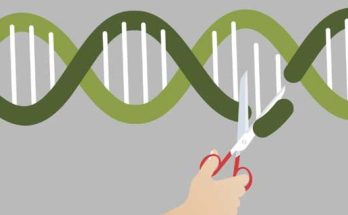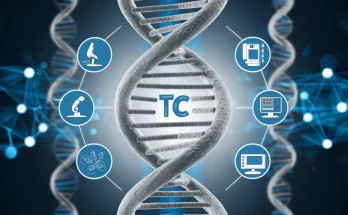Meteorologist Thea Sandmael watched the storm close in. It was near enough for her to spot a rotating dome of clouds emerging from its dark underbelly — the quickening of a tornado. By the time the spinning mass was 10 minutes away, Sandmael and her colleagues had shut down their radar instruments and evacuated their post.
“Just keep going,” she advised her colleague behind the wheel, who was rightly focused on maneuvering their SUV down the remote Alabama road. Following behind was another colleague in a truck carrying their cumbersome radar equipment. Evacuating was a good decision, she reflects: “We were sitting on the west side of the road, and the tornado touched down in our exact location.”
This wasn’t just another day of chasing tornadoes for Sandmael, of the Cooperative Institute for Severe and High-Impact Weather Research and Operations, or CIWRO, in Norman, Okla. (SN: 7/19/24). On this day, she and her crew were after something unusual: a sneaky type of twister called a squall line tornado.
Most tornadoes form in isolated storms called supercells (SN: 12/14/18). These tornadoes are the most common, most destructive and most well-studied class of twisters. Squall line tornadoes, on the other hand, develop along the front of long rows of storms known as quasi-linear convective systems, sometimes called QLCSs, or squall lines. They are generally less intense than supercell tornadoes, says atmospheric scientist Karen Kosiba of the University of Illinois Urbana-Champaign. But, she says, “that doesn’t mean they’re not dangerous.”
Squall line tornadoes have a tendency to surprise. They are ephemeral and often evade detection, forming and dying in the interludes between the scans of most radar systems. They are also difficult to anticipate, manifesting suddenly along rows of storms that can reach hundreds of kilometers long. And when compared with supercell tornadoes, squall line twisters occur more frequently in the cool season and in the dark hours of night, when tornadoes are less expected (SN: 12/16/21).
What’s more, squall line tornadoes are disproportionately more common in the southeastern United States, a region that is particularly vulnerable to twisters. Over the last 70 years, the country’s center of tornadic activity – supercell and squall line alike – has shifted from the Great Plains to the Southeast (SN: 10/18/18). The region not only has a denser population than the Great Plains, but it also contains a higher concentration of easily uprooted mobile and manufactured homes.
In the country’s new tornado heartland, a squall line twister need not be of great intensity to pose a grave risk. Recognizing the need to reduce that risk, Sandmael, Kosiba and dozens of other researchers joined forces for the Propagation, Evolution and Rotation in Linear Storms — or PERiLS — field campaign. During the late winter and spring seasons of 2022 and 2023, teams deployed across the Southeast captured an unprecedented trove of data.
Their work has already revealed that squall line tornadoes may be more common and more dangerous than previously thought. Fortunately, the researchers may have also discovered clues that could help make these twisters a little less surprising.
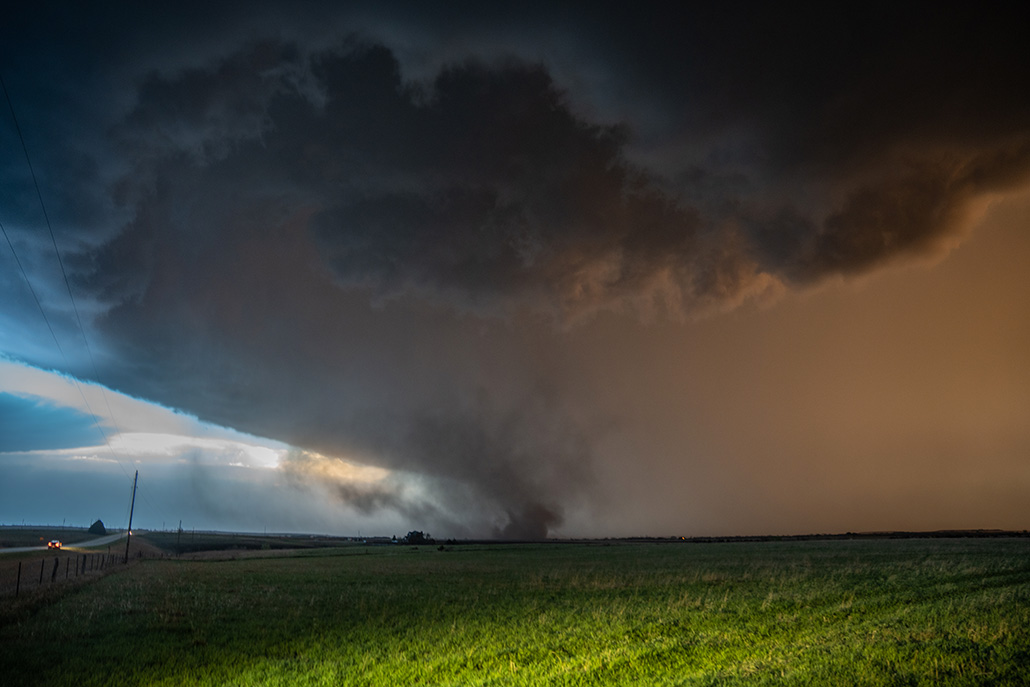
A tornado recipe with a twist
Whipping up a tornado requires certain atmospheric ingredients: a source of rotation, a lifting mechanism to trigger the rising of air and something to keep the rising going.
Begin with say, an advancing cold front pushing from underneath to lift the air ahead. This triggers the formation of an updraft. To persist, that updraft will need the air near the ground to possess some buoyancy, or what meteorologists call instability. And the secret sauce that gets things spinning? That’s vertical wind shear, or a change in the speed of winds with increasing height. Think of an upright paddle wheel; when higher winds move faster and push harder on the top paddles, the wheel rotates.
Recent observations suggest that these ingredients can mix in different ways to produce tornadoes in squall lines, says NOAA atmospheric scientist Anthony Lyza, who works at CIWRO. Take instability, which is often measured as convective available potential energy, or CAPE. CAPE is sometimes described as the amount of fuel available to a growing storm.
According to NOAA, CAPE values of 1,000 joules per kilogram are usually high enough to power strong storms. But “a lot of these [squall lines] are actually occurring in a low CAPE, high [wind] shear environment,” says atmospheric scientist Alexandra Anderson-Frey of the University of Washington in Seattle.
For instance, in March 2022, PERiLS researchers measured CAPE of only about 500 joules per kilogram in a squall line over Mississippi and Alabama that produced dozens of tornadoes. And Lyza says he’s seen squall line tornadoes supported by CAPE values as low as 100 joules per kilogram. These low CAPE settings exemplify environments that have been understudied in terms of their capacity to form squall line twisters, Anderson-Frey says.
At the same time, new technology has been uncovering more squall line tornadoes. Unlike older Doppler radar technology which scans only in the horizontal dimension, newer dual-polarization radar instruments scan both the vertical and horizontal dimensions. Over the last decade, the proliferation of the newer technology has increased detections of squall line twisters, Lyza says.
All this to say, squall line tornadoes appear to be more common than researchers previously thought. Perhaps, then, it’s a little less surprising that they may be more dangerous than previously believed, too.
Tornadoes inside tornadoes
On a calm afternoon in March 2022, Lyza showed up at a rural farmstead in Noxubee County, Miss. A squall line tornado had torn through the area the day before, and Lyza had arrived to help assess the damage for PERiLS.
Something about the scene struck him as odd. The operational radar hadn’t indicated that the tornado had been particularly intense. But Lyza observed significant damage to a house on the property.
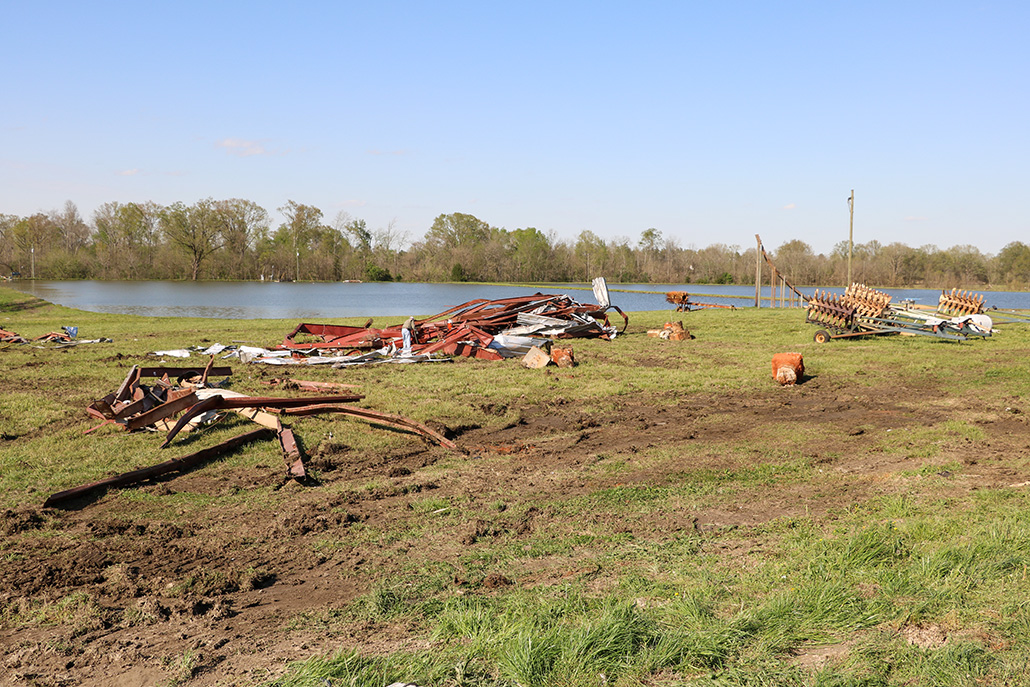
“A good chunk of the roof decking was blown off, and an entire exterior wall was blown out of the house,” Lyza says. Nearby rested the remains of a machine shed that had been uprooted and ripped apart. The shed had been anchored to the ground by 5-foot-long concrete pillars, Lyza recalls.
“We were pretty shocked,” he says. “We didn’t necessarily go to Noxubee County thinking we were going to find strong tornado damage there.”
The extensive damage wasn’t the only surprise: “We noticed that the tornado came into the property from the southwest,” Lyza says. But a trail of damaged trees seemed to suggest that the twister then veered due east for a couple hundred yards before swerving back toward the northeast.
It’s not unusual for a tornado to change directions, but at high speeds, their turns become wide, just like cars on a highway. This tornado had been advancing at about 100 kilometers per hour, and yet its track appeared to bend sharply.
Fortunately, a mobile radar vehicle had been deployed just four kilometers to the south. Its beams had captured the enigmatic twister’s odd dance, along with evidence that its strange path had been shaped by multiple vortices: tornadoes in a tornado.
“It’s a first that I know of — that anyone around here knows of — in terms of a [squall line] tornado,” Lyza says.
These subvortices appeared and disappeared so quickly, their evolution was difficult to follow via the intermittent radar scans. But “within a single scan, I think the most I was able to confidently identify was four at a time,” Lyza says. “These individual vortices were actually responsible for most of the damage, and the main tornado itself was rather weak.”
Researchers have observed that squall line tornadoes tend to be wider than supercell tornadoes; perhaps that’s because many house subvortices, Lyza speculates. Squall line tornadoes also tend to be less effective than similarly intense supercell twisters at lofting debris into the sky. That could be because these subvortices are so short-lived that “they won’t necessarily have the opportunity to lift debris as high up,” Lyza says.
These subvortices “probably increase the maximum intensity of the tornado,” says wind engineer Frank Lombardo of the University of Illinois Urbana-Champaign, who assessed the damage at the site with Lyza. The wind speeds in a subvortex may compound with the wind speeds of the parent tornado, he explains.
It’s hard to say whether subvortices are common in squall line tornadoes based on a single case. But if they are, “we might have to revisit our tornado risk calculations,” Lombardo adds. “We may have totally underestimated their intensity.”
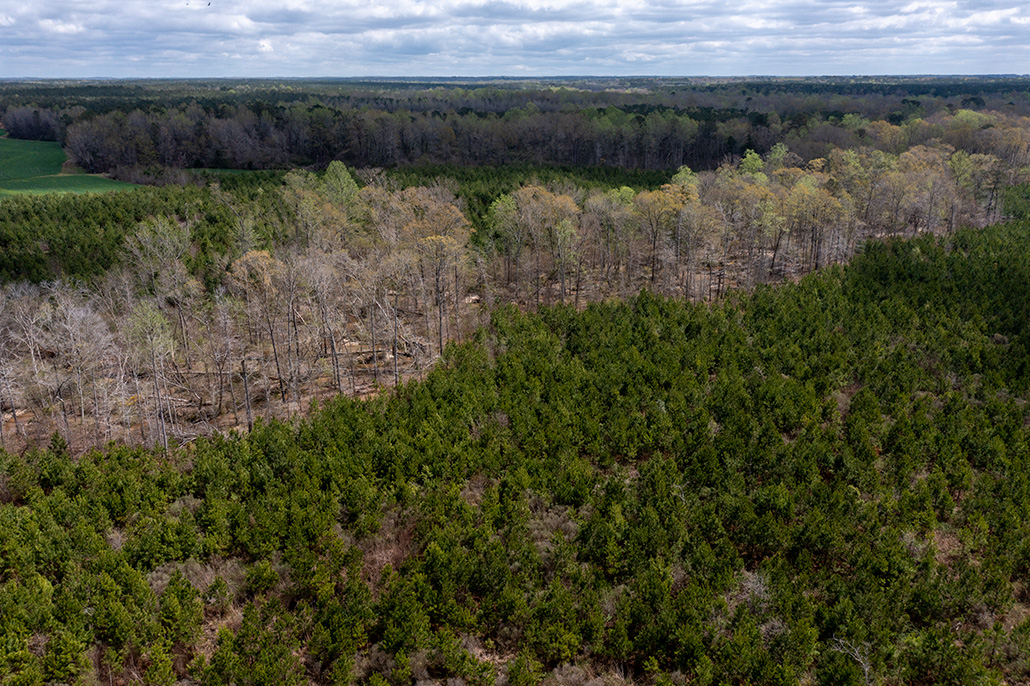
Improving twister forecasts
The discovery that squall line tornadoes may be more common and fiercer than previously thought makes predicting them even more urgent. Thankfully, PERiLS atmospheric scientist Todd Murphy of the University of Louisiana at Monroe and his colleagues may have found some much-needed clues.
For decades, researchers have observed that some squall lines bulge forward as they traveled across the landscape, forming the shape of an archer’s bow, and that tornadoes sometimes develop at the apex of these bows. Later, researchers learned that these tornadoes are associated with shallow, small-scale vortices of wind. The experts called them mesovortices.
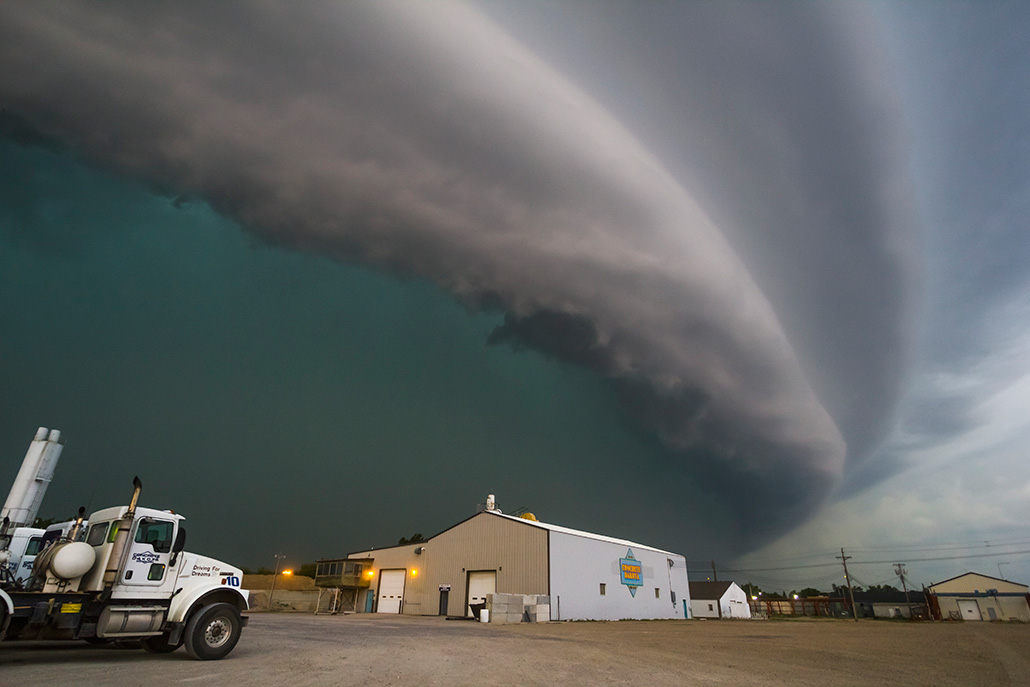
We can predict squall lines well — generally with more accuracy than we can predict other types of thunderstorms, says atmospheric scientist Patrick Skinner of CIWRO. But forecasting the embedded mesovortices is very difficult, he says. What’s more, only some mesovortices form tornadoes, and researchers don’t know why that’s the case.
So during the recent PERiLS field campaign, Murphy and his team used Light Detection and Ranging, or lidar, instruments to monitor the atmosphere in the hours before a squall line’s arrival. These instruments scanned the skies with pencil-thin laser beams, which reflected off aerosols that acted as tracers for the wind.
“In the vast majority of our cases, the lidar data showed pretty abrupt changes in the wind profile beginning about 90 minutes before the squall line got to the site,” Murphy says. At different levels of the lower atmosphere, the vertical wind shear grew larger, inducing more rotation in the squall line, he explains.
And it wasn’t just the wind shear that changed dramatically; all of the PERiLS key ingredients for tornado formation “can change really rapidly within an hour or two ahead of the arrival of a squall line,” Murphy says.
Using data collected during PERiLS, along with 10 years’ worth of radar data gathered by the National Weather Service, Murphy and his colleagues investigated how the atmosphere changed ahead of mesovortices in squall lines. More specifically, they analyzed wind velocities at different levels of the atmosphere ahead of mesovortices that formed tornadoes and those that did not.
Ahead of tornadic mesovortices, there appeared to be slightly more wind shear, Murphy says. More importantly, there was more rotation, and this signature was more pronounced ahead of squall lines that generated at least five twisters.
The data suggest that certain wind structures may be lining up ahead of tornadic mesovortices, Murphy says. Mesovortices form within updrafts, which continually form and dissipate along the entire length of a squall line. When an updraft meets and becomes aligned with air circulating near the ground, the updraft may stretch the circulation upward, causing it to spin faster.
“We call it the ice-skater effect,” Murphy says, referencing the famous example of a skater spinning faster when both arms are pulled close to the body. “If you stretch that rotation,” he says, “it causes the radius to get smaller, but the rotation strengthens.”
If meteorologists are monitoring conditions 60 to 90 minutes ahead of a squall line and the wind profile starts to develop this signature, then they may need to consider issuing warnings, Murphy says.
“Once it’s been vetted,” he says, “[this signal] appears to be a clear-cut operational signature the Weather Service can probably use.”
Much of the data gathered during PERiLS is still being analyzed, and more actionable findings may emerge in the coming years. Skinner works on NOAA’s Warn-on-Forecast, a project to increase the lead time of forecasts for tornadoes and other severe weather (SN: 4/17/15). He is analyzing the PERiLS data to determine how much resolution current weather simulations need to accurately portray mesovortices in squall lines.
It’s going to take vast improvements in our weather simulations to be able to predict tornadic mesovortices as well as we can predict supercell tornadoes, Murphy says. But eventually, he says, “I think we’ll get there.”
#Squall #line #tornadoes #sneaky #dangerous #difficult #forecast
Image Source : www.sciencenews.org

